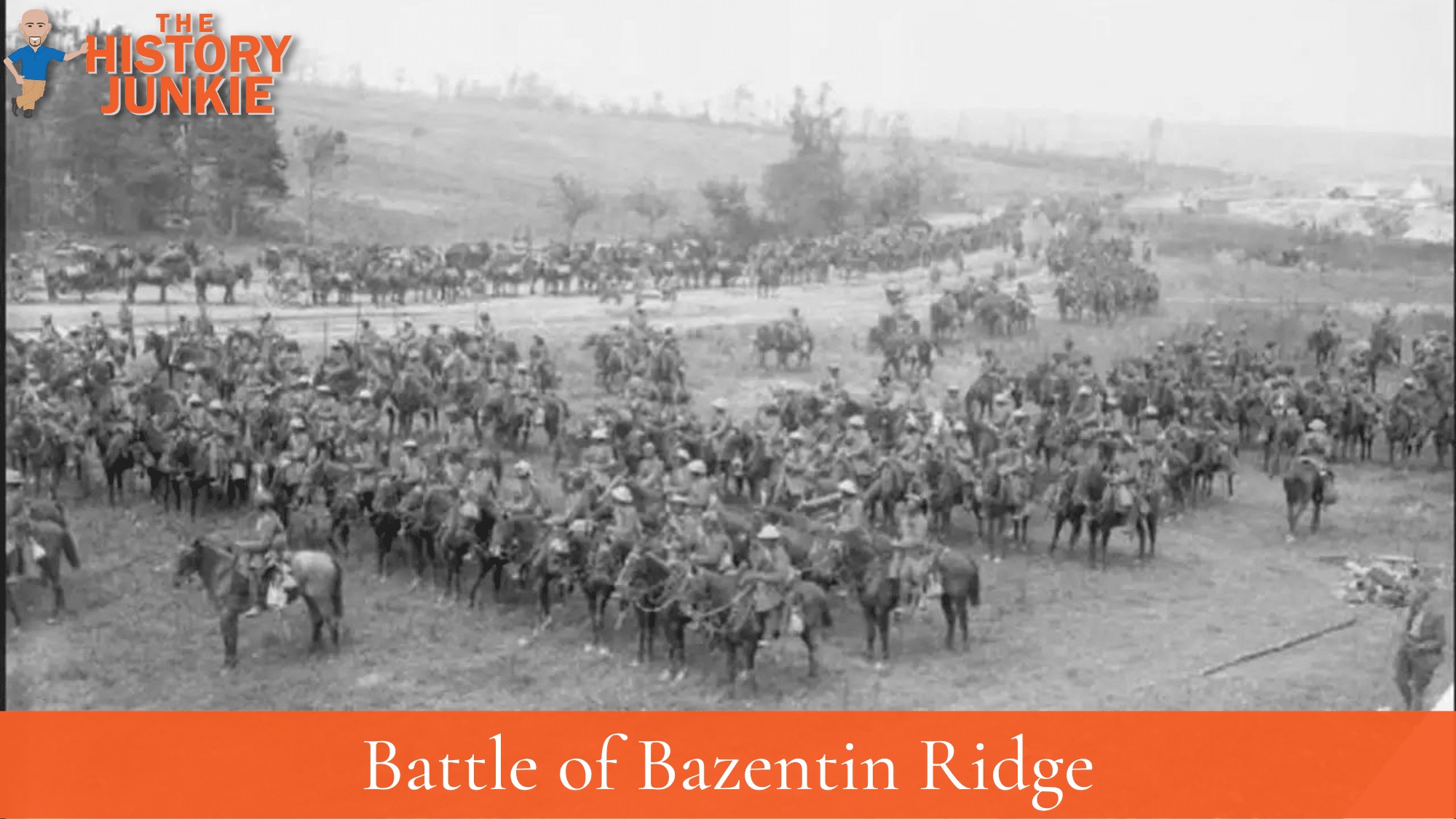The Battle of Bazentin Ridge was a subsidiary attack of the Somme Offensive, fought between the British and German armies from July 14 - 17, 1916. The battle took place on a front of about 5 miles on the Somme battlefield in France.

The British objective was to capture the German-held Bazentin Ridge, which was a key strategic position. The ridge overlooked the British lines and provided the Germans with excellent observation and artillery fire positions.
The battle began on July 14, with a massive artillery bombardment of the German lines. The bombardment lasted for several hours and was intended to destroy the German defenses and weaken their morale.
After the bombardment, the British infantry attacked. The attack was successful, and the British were able to capture the Bazentin Ridge. However, the Germans counterattacked several times, and the British were unable to hold onto all of their gains.
The battle ended on July 17, with the British still holding the Bazentin Ridge. However, the battle was costly for both sides. The British suffered over 30,000 casualties, and the Germans suffered over 20,000 casualties.
The Battle of Bazentin Ridge was a significant victory for the British. The capture of the Bazentin Ridge gave the British a valuable strategic position and allowed them to advance their lines closer to the German-held city of Bapaume.
The battle also demonstrated the effectiveness of the British artillery. The artillery bombardment before the attack was devastating to the German defenses and helped to ensure the success of the British infantry.
The Battle of Bazentin Ridge was a costly victory, but it was a necessary step on the road to victory for the Allies.
The battle helped to break the deadlock on the Western Front and paved the way for the Allied advances later in the war.
Prelude to the Battle
The Battle of Bazentin Ridge was part of the second phase of the Somme Offensive. The first phase of the offensive, which began on July 1, 1916, was a costly failure for the Allies. The British suffered over 57,000 casualties on the first day of the offensive, and the French suffered over 20,000 casualties.
Despite the failure of the first phase of the offensive, the Allies were determined to continue the attack. The second phase of the offensive, which began on July 14, 1916, was aimed at capturing the Bazentin Ridge.
The British plan for the attack was to use a combination of artillery and infantry to overwhelm the German defenses. The artillery bombardment would be followed by an infantry assault, which would be supported by tanks and cavalry.
The Battle
The Battle of Bazentin Ridge began on July 14, 1916, at 7:30 a.m. with a massive artillery bombardment of the German lines. The bombardment lasted for several hours and was intended to destroy the German defenses and weaken their morale.
After the bombardment, the British infantry attacked. The attack was successful, and the British were able to capture the Bazentin Ridge. However, the Germans counterattacked several times, and the British were unable to hold onto all of their gains.
The battle ended on July 17, 1916, with the British still holding the Bazentin Ridge. However, the battle was costly for both sides. The British suffered over 30,000 casualties, and the Germans suffered over 20,000 casualties.
Conclusion
The Battle of Bazentin Ridge was a significant victory for the British. The capture of the Bazentin Ridge gave the British a valuable strategic position and allowed them to advance their lines closer to the German-held city of Bapaume.
The battle also demonstrated the effectiveness of the British artillery. The artillery bombardment before the attack was devastating to the German defenses and helped to ensure the success of the British infantry.
The Battle of Bazentin Ridge was a costly victory, but it was a necessary step on the road to victory for the Allies.
The battle helped to break the deadlock on the Western Front and paved the way for the Allied advances later in the war.
